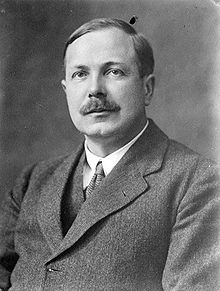Charles Galton Darwin | |
|---|---|
 | |
| Born | Charles Galton Darwin 19 December 1887 Cambridge, England |
| Died | 31 December 1962 (aged 75) Cambridge, England |
| Nationality | British |
| Alma mater | Trinity College, Cambridge |
| Known for | Darwin term Darwin Lagrangian Darwin drift Darwin–Radau equation Darwin–Fowler method |
| Spouse |
Katharine Pember (m. 1925) |
| Children | 5, including Cecily and Henry |
| Parent(s) | George Howard Darwin Martha (Maud) du Puy |
| Relatives | Darwin–Wedgwood family |
| Awards | Royal Medal (1935) Fellow of the Royal Society[1] |
| Scientific career | |
| Fields | Physicist |
| Institutions | National Physical Laboratory Victoria University of Manchester Royal Engineers Christ's College, Cambridge California Institute of Technology University of Edinburgh Manhattan Project |
| Academic advisors | Ernest Rutherford Niels Bohr |
| 4th Director of NPL | |
| In office 1949–1938 | |
| Preceded by | William Lawrence Bragg |
| Succeeded by | Edward Victor Appleton (Acting) |
Sir Charles Galton Darwin KBE MC FRS[1] (19 December 1887 – 31 December 1962) was an English physicist who served as director of the National Physical Laboratory (NPL) during the Second World War.[2] He was a son of the mathematician George Darwin and a grandson of Charles Darwin.
- ^ a b Thomson, G. P. (1963). "Charles Galton Darwin. 1887-1962". Biographical Memoirs of Fellows of the Royal Society. 9: 69–85. doi:10.1098/rsbm.1963.0004.
- ^ O'Connor, John J.; Robertson, Edmund F., "Charles Galton Darwin", MacTutor History of Mathematics Archive, University of St Andrews